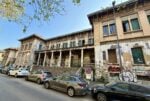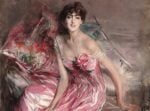Mark Manders – Cose in corso
.jpg)
Oggetti trovati, ri-costruiti o meglio reinventati si affiancano a manufatti creati dall’artista in composizioni che, caleidoscopicamente, continuano a presentarsi in sempre nuove costellazioni organiche creando ulteriori interazioni tra la vita e gli oggetti, come pagine di un diario di un personalissimo percorso artistico.
Comunicato stampa
Mark Manders apre la sua pubblicazione Reference Book del 2012 con questa nota per il lettore: “… I will continue to work on this self-portrait, because that’s what it really is, and you are invited to trace it as long as you are alive”.
Oggetti trovati, ri-costruiti o meglio reinventati si affiancano a manufatti creati dall’artista in composizioni che, caleidoscopicamente, continuano a presentarsi in sempre nuove costellazioni organiche creando ulteriori interazioni tra la vita e gli oggetti, come pagine di un diario di un personalissimo percorso artistico.
Sculture e oggetti sedimentano per lunghi periodi, talvolta anni, nel suo studio e sono assoggettati a incessanti modifiche e cambiamenti nell’arco del tempo in un lungo processo di gestazione che si conclude nel momento in cui vengono inscritti nello spazio destinato alla loro installazione.
Si può allora parlare di opere aperte sia in senso temporale sia semiologico.
In coerenza con il concetto di percorso in fieri è la scelta elettiva di un materiale come l’argilla che Manders impiega nei suoi manufatti sia come calco per sviluppi successivi con altri materiali (le resine epossidiche, le fusioni) sia come materia prima con cui realizza figure umane e animali, fratturate o di sfilacciata incompletezza.
L’argilla è materiale duttile, plasmabile e mobile per eccellenza.
Per Manders l’arte ci consente di esperire la nuda forma di questi oggetti che fungono da catalizzatori di sogni e ricordi e sono capaci di generare una comprensione del mondo non solo per l’artista, ma per lo stesso spettatore.
Da qui la sua definizione di “autoritratto come architettura” che si inscrive in un progetto concettuale senza soluzione di continuità. Il suo primo lavoro del 1986, Self-Portrait as a Building, ha già in sé tutti gli aspetti centrali della sua ricerca: la trasformazione dell’esistenza dell’opera e il suo sviluppo biografico in spazi della memoria.
Cose in corso è il titolo che l’artista ha dato al progetto realizzato per la Collezione Maramotti, sottolineando in questo modo la continuità con le premesse del suo lavoro creativo.
La mise-en-scène di questa grande installazione impiega oggetti già presenti in altri lavori (la vasca da bagno, le sedie, il corpo incompiuto che si distende sull’asse lignea poggiata alla sedia), ma che sono qui contestualizzati in modo nuovo. L’installazione è collocata su un pavimento costituito da mattonelle in ferro che crea un ambiente virtuale inscritto nello spazio espositivo. Il risultato è la creazione di una rappresentazione teatrale che, come viene indicato dallo stesso Manders, contiene una “conceptual potential narrative in a total frozen theatre”. Un elemento nuovo è inoltre l’uso del colore puro che definisce alcuni oggetti presenti nell’opera a sottolineare la possibilità di un gesto fortemente pittorico in una dimensione sculturale.
Il progetto Cose in corso si accompagna a un libro d’artista totalmente ideato e realizzato dallo stesso Manders ed edito da Roma Publications, casa editrice indipendente fondata
dall’artista.
Mark Manders opens his 2012 volume Reference Book with the following note: “… I will continue to work on this self-portrait, because that’s what it really is, and you are invited to trace it as long as you are alive”.
Found, re-constructed or better still re-invented objects are
placed side by side with elements created by the artist in compositions which continuously and kaleidoscopically reveal novel organic constellations. These juxtapositions create a narrative, like the pages of a diary in a very personal artistic development.
Sculptures and objects are left to settle for long periods of time, even years, in his studio, and undergo on-going changes and transformations in a long process of gestation ending when they are placed in the space set aside for their installation.
We may then talk about open artworks both in time-based and semiologic terms.
The choice of a material such as clay is consistent with the concept of an in fieri progression; Manders employs it in his creations both as a mould for further developments with other materials (epoxy resins, casts) and as raw material for the creation of human and animal figures, which are broken or disjointedly incomplete.
Clay is the supple, pliable and shifting material par excellence.
For Manders, art enables us to extract the naked shape of these objects, which work as catalysts of dreams and recollections, and are able to trigger an understanding of the world, not only for the artist, but also for viewers.
Hence the artist's definition of “self-portrait as architecture”
within an on-going conceptual project. His first work from 1986,
Self-Portrait as a Building, showed already all the central traits of his research: the transformation of the life of the artwork and its biographical development in the spaces of memory.
Cose in corso is the title that the artist has given to the project made for Collezione Maramotti, thus demonstrating its continuity with the tenets of his creative process.
The mise–en scène of this large installation uses objects which
are already present in other works (bathtub, chairs, the unfinished body laid out on the wood plank resting on the chair), which are here contextualized differently. The installation rests on the floor made of iron tiles which create a virtual environment inscribed onto the exhibition space. The outcome is the creation of a stage representation which – as indicated by Manders himself – may hold a “conceptual potential narrative in a total frozen theatre”.
A new element is the use of pure colour defining some objects present in the work as to underline the possibility of a strongly pictorial gesture within a sculptural dimension.
The project Cose in corso is accompanied by an artist's book completely devised and made by Manders and published by Roma Publications, the independent publishing company founded by the artist.



